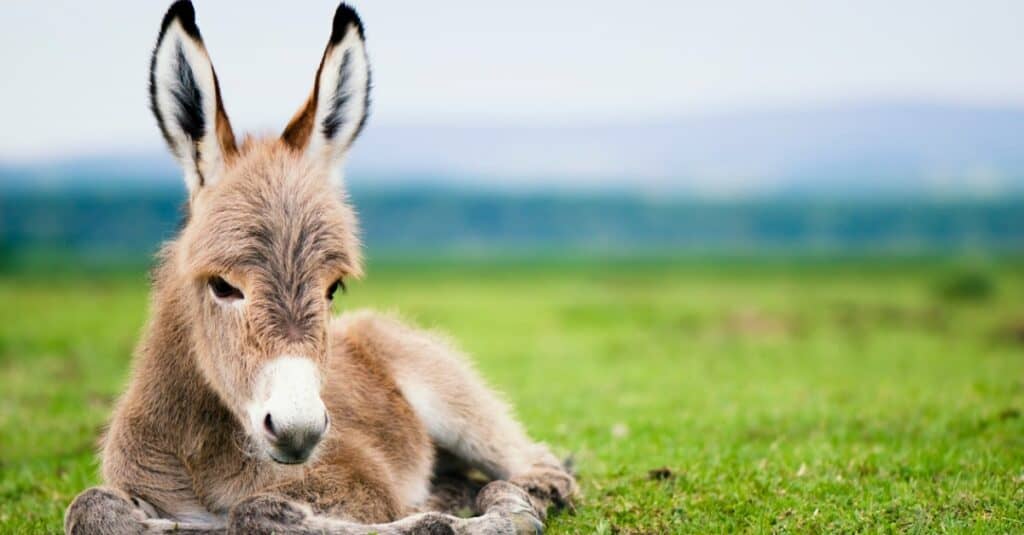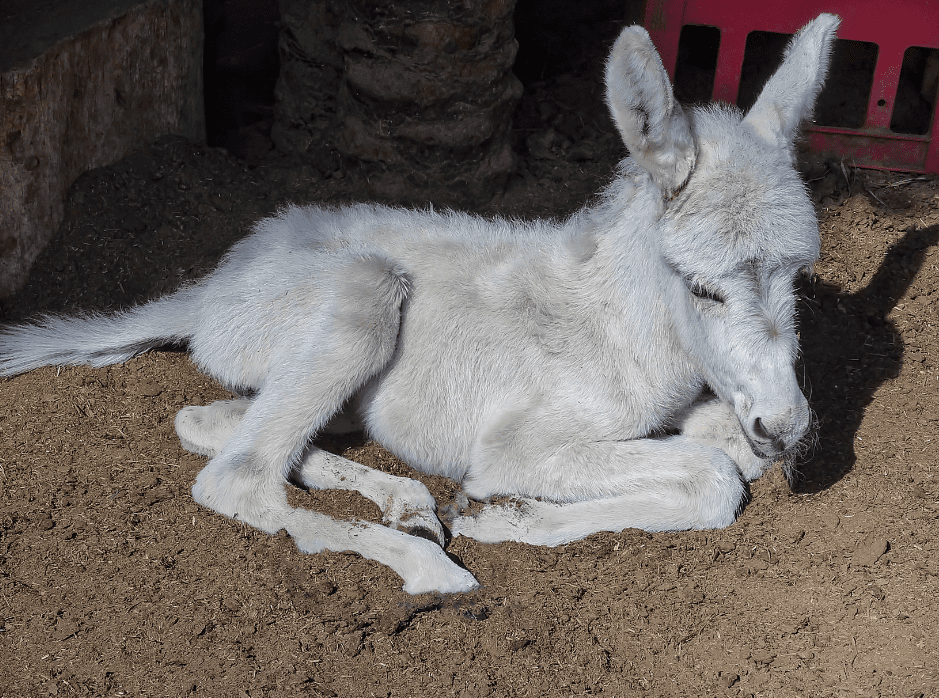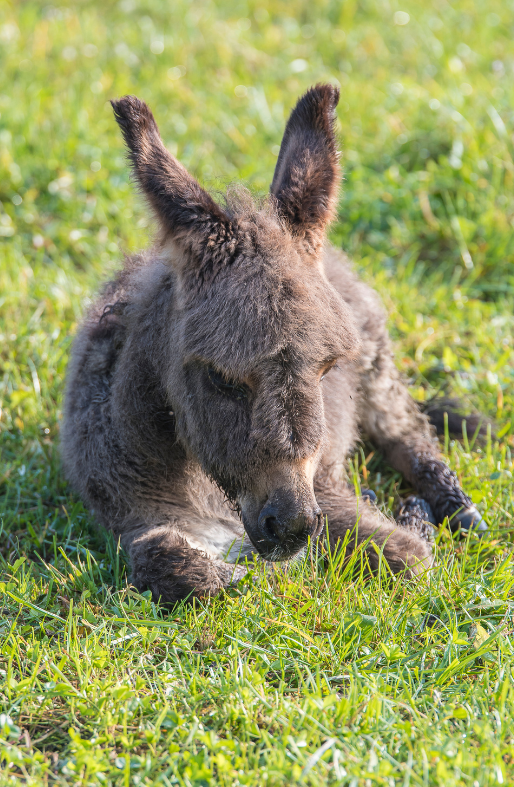Adorable Baby Donkeys: What Are They Called?
What is the name for a baby donkey? The unequivocal answer is "foal," a term that resonates across the equine world. This seemingly simple question opens a doorway into the fascinating lives of these often-underappreciated creatures, revealing a nuanced vocabulary that reflects their unique lifecycle.
From the moment theyre born, foals captivate with their endearing awkwardness and surprising resilience. These wobbly-legged youngsters, born after a gestation period of roughly 12 months, quickly find their footing, often standing within an hour of birth. This rapid development is crucial for survival, allowing them to keep pace with their mothers and evade potential predators. While twins are possible, single births are the norm, fostering a strong bond between mother (jenny or jennet) and offspring. This maternal connection shapes the foal's early life, providing essential nourishment and social learning.
[table id=1 /]The term "foal" itself, like many animal names, reflects a broader categorization within the equine family. Just as a baby horse or zebra is called a foal, so too is the donkeys offspring. This shared nomenclature underscores the biological kinship between these species. But the terminology doesn't end there. As the foal matures, the language used to describe it becomes more specific. A young male donkey under four years old is known as a colt, while a young female is called a filly. These distinctions, mirroring those used for horses, further enrich the lexicon surrounding these animals.
Beyond the simple labels, understanding the life stages of a donkey reveals a complex and intriguing animal. The first year, spent as a foal, is a period of intense learning and growth. Completely reliant on their mothers for sustenance and protection, foals gradually develop the skills necessary for independent survival. They learn to graze, interact with other donkeys, and navigate their environment, all under the watchful eye of their jenny. This crucial period lays the foundation for their adult lives.
While the term "foal" is universally accepted, regional variations and colloquialisms exist. In some Spanish-speaking communities, "potro" may be used, reflecting the rich linguistic diversity surrounding these animals. The term "burro," also of Spanish origin, is often used interchangeably with "donkey," adding another layer to the naming conventions. Its important to note, however, that these variations dont change the fundamental biological reality: a baby donkey, regardless of regional dialect, is a foal.
Donkeys, both wild and domesticated, play vital roles in various ecosystems and cultures around the world. Their strength, resilience, and adaptability have made them invaluable partners to humans for centuries. From carrying burdens across mountainous terrain to providing companionship and emotional support, donkeys have earned their place in human history. Understanding their life cycle, starting with the foal, is key to appreciating their multifaceted contributions. Their journey from wobbly-legged newborns to strong and capable adults is a testament to the power of adaptation and the enduring bond between mother and offspring. The simple question, "What is a baby donkey called?" thus unlocks a wealth of knowledge about these remarkable animals.
Interestingly, the scientific name for the donkey, Equus africanus asinus, reveals its African origins. While donkeys have been domesticated and spread across the globe, their lineage traces back to the wild asses of Africa. This ancestral connection further highlights the importance of conservation efforts to protect these animals and their habitats.
Donkeys are not hybrids. A common misconception arises from the existence of mules and hinnies. A mule is the offspring of a female horse (mare) and a male donkey (jack). A hinny, conversely, is the product of a female donkey (jenny) and a male horse (stallion). While donkeys are integral to the creation of these hybrid animals, they themselves are a distinct species with their own unique lineage.
Male donkeys intended for work and not breeding are often castrated (gelded). This procedure, similar to that performed on horses, reduces aggressive tendencies and makes them easier to manage. A gelded male donkey, like a gelded horse, is referred to as a gelding.
The lifespan of a donkey can vary, but they typically live for 25 to 30 years. This longevity speaks to their hardiness and adaptability, making them valuable companions and working animals throughout their lives.
Foals typically stay with their mothers for six to eight months, gradually becoming more independent as they mature. During this time, they learn essential survival skills and social behaviors from their mothers and other members of the herd.
The charm of a foal is undeniable, whether witnessed firsthand or admired from afar. Their playful antics, endearing expressions, and unwavering connection to their mothers evoke a sense of wonder and appreciation for the natural world. From their first wobbly steps to their eventual maturity, foals embody the resilience and adaptability of their species, reminding us of the intricate web of life that connects us all.



Detail Author:
- Name : Ismael Morar
- Username : marquardt.elsa
- Email : korey37@stark.org
- Birthdate : 1991-09-15
- Address : 22956 Miller Square Bogisichburgh, OH 65766-5141
- Phone : (727) 418-0807
- Company : Cassin-Davis
- Job : Log Grader and Scaler
- Bio : Voluptas libero dolorem fugit quis velit iusto voluptatum. Aut quo veniam repellat. Voluptatem sed quidem in et architecto. In sit nesciunt accusantium.
Socials
tiktok:
- url : https://tiktok.com/@grimes2005
- username : grimes2005
- bio : Vel nesciunt odio sed cupiditate possimus. Illo vel architecto quae nam ut ea.
- followers : 4291
- following : 2900
facebook:
- url : https://facebook.com/cgrimes
- username : cgrimes
- bio : Rerum mollitia in et aut. Ad et est neque sit enim blanditiis sit sit.
- followers : 5619
- following : 1606
twitter:
- url : https://twitter.com/carol.grimes
- username : carol.grimes
- bio : Dolorum magni explicabo velit atque error et aspernatur dolores. Fuga qui quis odit. Quisquam repellat minima quas sunt.
- followers : 7000
- following : 2194
instagram:
- url : https://instagram.com/carol_dev
- username : carol_dev
- bio : Id et ducimus sed nisi dolorum. Enim vel delectus sit. Nesciunt rerum fuga quam magni.
- followers : 3406
- following : 2186